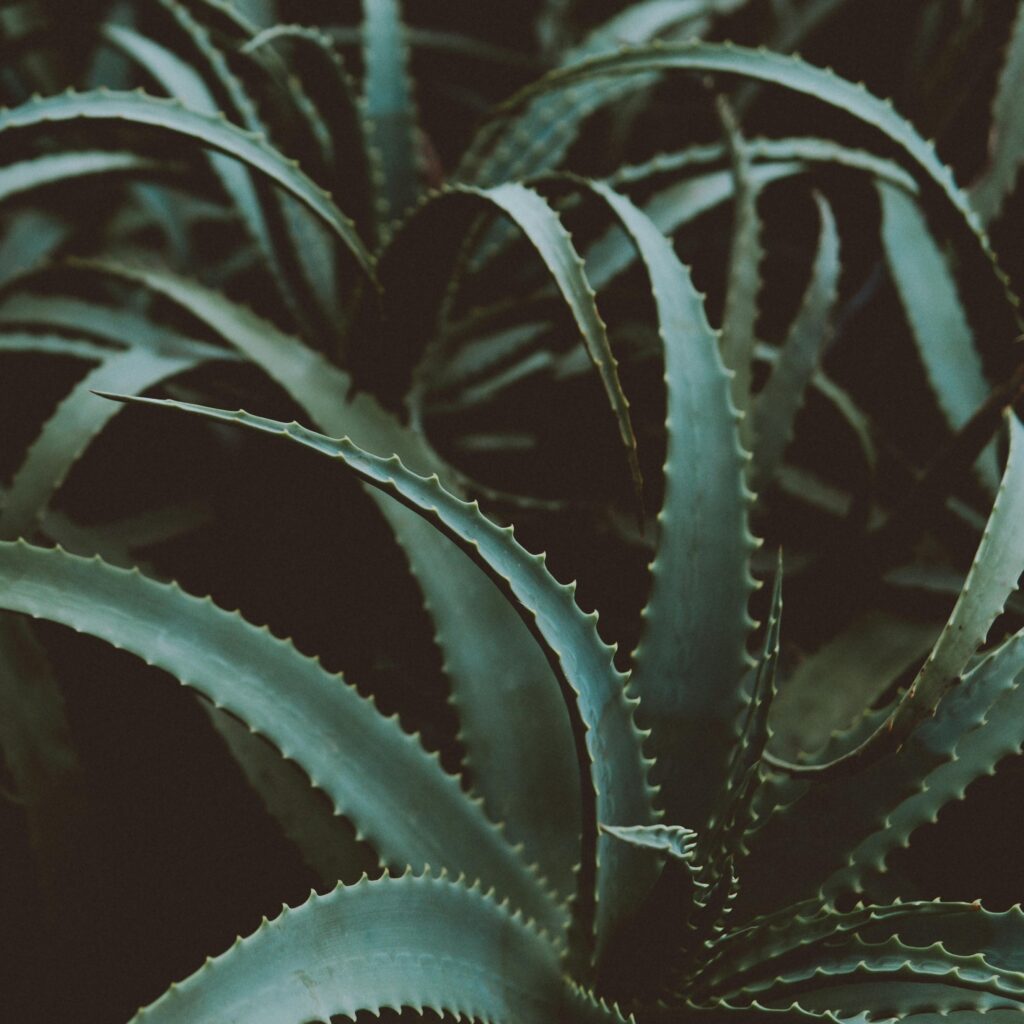Geographical Origin & Distribution:
Aloe Vera is a succulent plant species that belongs to the Asphodelaceae family from Africa, but is now all around the world. It is believed to be native to the Arabian Peninsula, specifically the region around Yemen, Oman, and parts of Saudi Arabia. From the Arabian Peninsula, Aloe Vera spread to North Africa and the Mediterranean region, as well a the Americas.
Historical Use
By the time Aloe vera reached colonial America with European settlers in the 1600s, it was already recognised as a powerful medicinal plant in Europe and Africa. And while Aloe is native to Africa and the Arabian Peninsula, similar succulents with medicinal properties were found in the Americas. Native Americans used various species of succulents and healing plants in a manner akin to Aloe Vera, applying them to treat burns, wounds, and skin irritations.
Medical Use
Aloe Vera is composed of different parts, each of which has unique medicinal properties and uses. The inner leaf gel is the clear, mucilaginous substance found inside the thick leaves of the Aloe Vera plant. This part of the plant is most commonly used in modern medicine. The latex (also known as aloe juice or aloe sap) is the yellow, bitter liquid found just beneath the outer skin of the Aloe Vera leaf. It is distinctly different from the inner gel and has its own medicinal uses, although it must be used with caution.
Leaves:
The primary part of the plant used for medicinal and therapeutic purposes. They are long, thick, and fleshy, with a pointed, spiky appearance, and can grow up to 12–19 inches (30–50 cm) in length. The structure of the leaf is designed to store water, allowing the plant to thrive in arid climates.
Flowers:
Typically bright yellow or orange tubular flowers that grow in clusters along the stalk.
Size:
A mature Aloe Vera plant usually grows between 30 to 60 cm in height. The height can increase when the plant produces a flower stalk.
Growing Conditions:
Aloe Vera plants grow best in warm, sunny environments and well-draining soil. The plant is drought-tolerant and stores water in its leaves. It prefers to dry out completely between watering.

Active Substances
- Polysaccharides: Immune support, healing, and antiviral properties.
- Vitamins (A, C, E, B12): For antioxidant protection, skin health, and immune function.
- Minerals (calcium, magnesium, zinc): Supporting cellular and metabolic processes.
- Amino Acids: For tissue repair and protein synthesis.
- Enzymes like bradykinase for anti-inflammatory effects.
- Anthraquinones (e.g., aloin, emodin): Laxative and antimicrobial properties.
- Sterols and Saponins: Antiseptic, anti-inflammatory, and cleansing benefits.
Chemical Breakdown (per 100g)
Moisture: ~95-99%
Carbohydrates: ~0.5-1%
Polysaccharides: ~0.4-1%
Proteins: ~0.06-0.1%
Fatty Acids and Sterols: ~0.015-0.05%
Vitamins and Minerals: Trace amounts in varying concentrations depending on growth conditions.
Uses of Aloe Vera for Horses & Dogs
While Aloe Vera is generally considered safe for horses and dogs, it’s important to introduce any new ingredient or supplement gradually and monitor your animal’s response. Don’t feed to pregnant mares!
- Digestive Health:
- Ulcer Treatment: Aloe Vera is commonly used to help treat gastric ulcers in horses. It is believed to soothe the lining of the stomach, reducing inflammation and promoting healing.
- Digestive Support: Aloe Vera can aid digestion and improve nutrient absorption. It has natural enzymes and compounds that may help regulate the digestive process and alleviate issues like colic or diarrhea.
- Skin and Coat Health:
- Wound Healing: Aloe Vera gel can be applied topically to cuts, scrapes, and wounds. Its antibacterial, antifungal, and anti-inflammatory properties can accelerate healing, reduce infection risk, and soothe irritated skin.
- Coat Condition: When included in a horse’s diet or applied topically, Aloe Vera can enhance coat shine and texture, making the horse’s coat appear healthier.
- Anti-inflammatory Properties:
- Aloe Vera contains compounds that have natural anti-inflammatory effects. This can be useful for treating conditions like arthritis, laminitis, or soft tissue injuries. It may help reduce swelling and pain when applied or given orally.
- Immune System Support:
- Aloe Vera contains antioxidants, vitamins (A, C, E), and minerals, which can boost the immune system, helping the horse fight off infections or recover from illness.
- Detoxification:
- Aloe Vera is known for its cleansing properties. It can help detoxify the liver and promote the elimination of toxins from the horse’s system, keeping the horse healthy and improving overall well-being.
Additional Sources: National Center for Biotechnology Information; Biocatalysis and Agricultural Biotechnology
